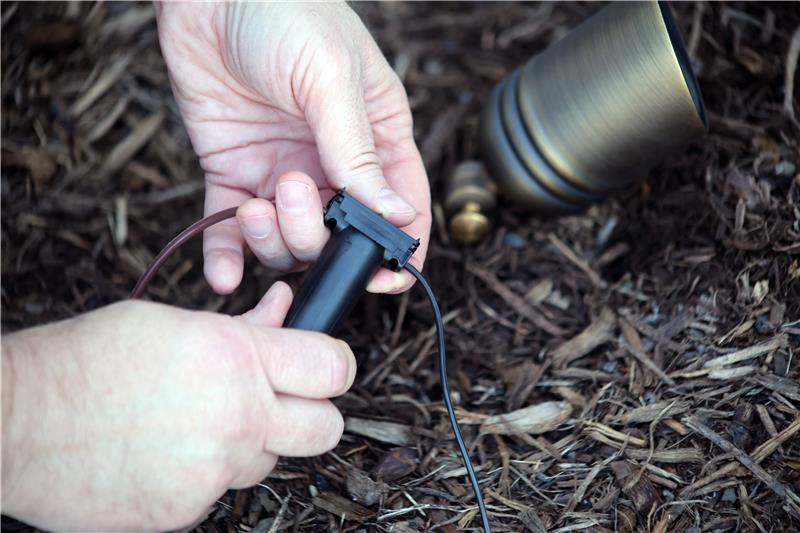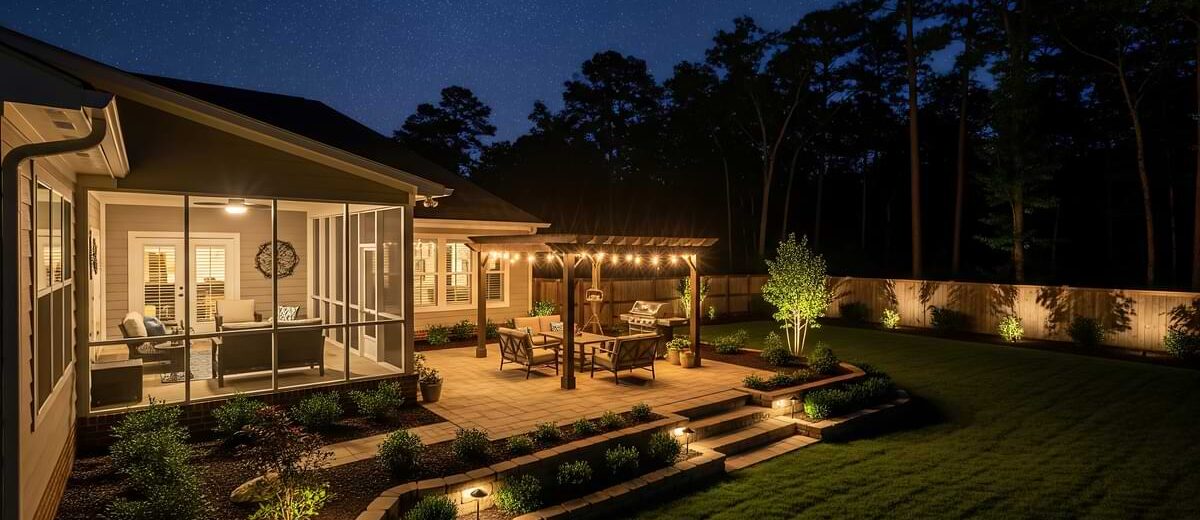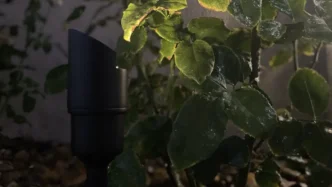Table of Contents
- Why Landscape Lighting Cable Size Matters
- Lighting Cable Size Gauge: Comparison Chart
- The Key Factors in Calculating Lighting Cable Size
- Lighting Cable Size: Find the Right Setup for You
- FAQs for Lighting Cable Size
Landscape Lighting Wire Guide
Lighting cable size is a crucial factor when designing a landscape lighting system. While fixture placement and style often take center stage, the wire carrying power to your lights plays an equally important role.
Choosing the correct landscape lighting wire size ensures that your system runs efficiently, avoids voltage drop, and keeps your lights shining bright for years to come.

Why Landscape Lighting Cable Size Matters
Landscape lighting wire isn’t one-size-fits-all. Each run of wire carries electricity from your transformer to the fixtures. If the wire is too thin for the distance or the load, you’ll experience voltage drop—where the lights furthest down the line appear dimmer than the ones closer to the power source.
Using the correct gauge wire keeps brightness consistent and prevents stress on your system.
Lighting Cable Size Gauge: Comparison Chart
Wire thickness is measured in gauge (AWG). The lower the gauge number, the thicker the wire. Thicker wire carries more current over longer distances with less voltage drop.
| Wire Gauge (AWG) | Best For | Notes |
| 12-gauge | Long runs, high wattage loads | Thickest common option; minimizes voltage drop |
| 14-gauge | Medium runs, moderate loads | Balance of flexibility and strength |
| 16-gauge | Short runs, low wattage loads | Thinner wire; use only when distance and load are minimal |
The Key Factors in Calculating Lighting Cable Size
To calculate the right wire size for your project, consider three main factors:
- Total Wattage Load: Add up the wattage of all the fixtures connected to a wire run. For example, if you have ten 5-watt LED lights, your total load is 50 watts.
- Distance from Transformer: Longer wire runs experience more resistance, which increases the risk of voltage drop.
- Voltage of Your System: Most landscape lighting systems are 12 volts. A lower-voltage system is more sensitive to voltage drop, making proper wire size even more important.
A Quick Example of the Right Lighting Cable Size
Let’s say you’re running a 12V system with 8 fixtures at 5 watts each (40 watts total) located 75 feet from the transformer.
A 14-gauge wire might struggle at that distance, causing the lights at the end of the run to dim. Bumping up to a 12-gauge wire reduces resistance and keeps your lights evenly lit.
Lighting Cable Size Tips for Success
A well-designed system isn’t just about the math; it’s about practical planning. These simple tips help you avoid common mistakes and keep your lights running smoothly.
- Plan Runs Strategically: Divide fixtures into multiple runs rather than putting everything on a single wire.
- Use Voltage Drop Calculators: Many online tools can help you determine the best gauge for your layout.
- Oversize When in Doubt: Choosing a thicker wire may cost a little more upfront but provides peace of mind and system longevity.
- Keep Connections Clean: Even with the right wire size, poor connections can lead to dim or flickering lights.
What Size Wire Do I Need for Landscape Lighting?
Calculating the correct landscape lighting wire size is just as important as choosing the right fixtures.
By factoring in wattage, distance, and system voltage, you can select a wire gauge that delivers consistent, reliable performance. With the right wire, your outdoor lighting design won’t just look good—it will shine bright for years to come.
FAQs for Lighting Cable Size
To calculate landscape lighting cable size, start by adding up the total wattage of all the fixtures on a run. Next, measure the distance from the transformer to the farthest light. Use a voltage drop calculator or chart to match wattage and distance to the correct wire gauge.
Using a wire that’s too thin can cause voltage drop, making lights at the end of the run dimmer than those closer to the power source. Over time, this uneven strain can also reduce the life of your fixtures and transformer. Choosing the right gauge helps protect your investment and ensures consistent brightness.
Yes, in most cases, oversizing your landscape lighting wire is a smart move. A thicker wire can handle more wattage over longer runs, which reduces the chance of voltage drop. While it may cost a little more upfront, it provides peace of mind and better long-term performance.
Join our Insider list and check out the different lighting options that we have to offer.








